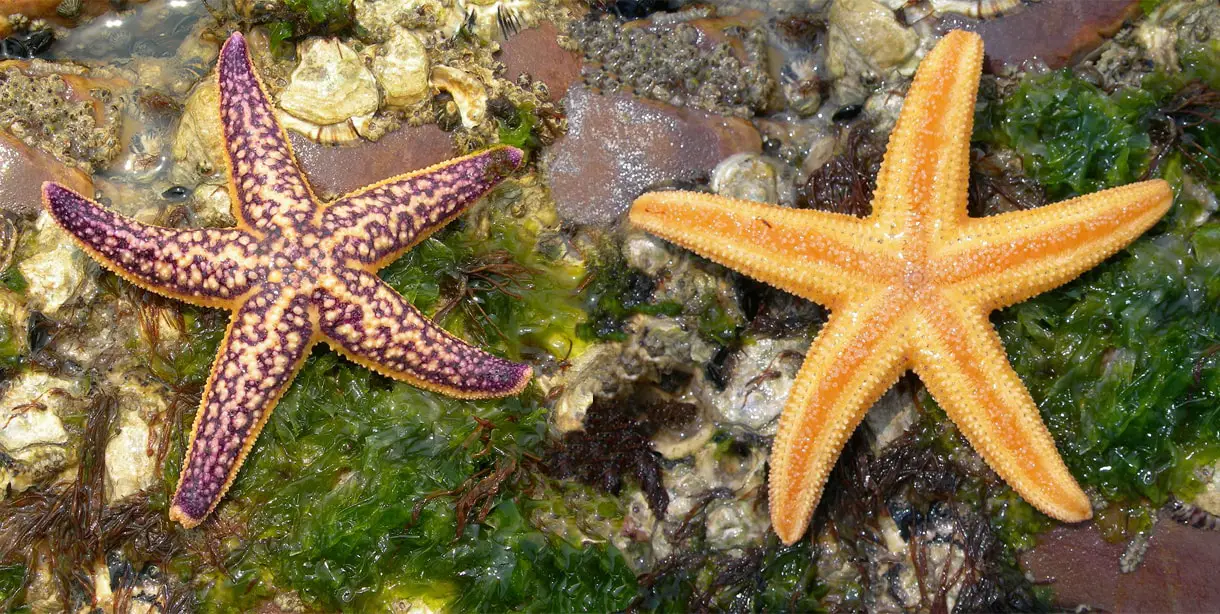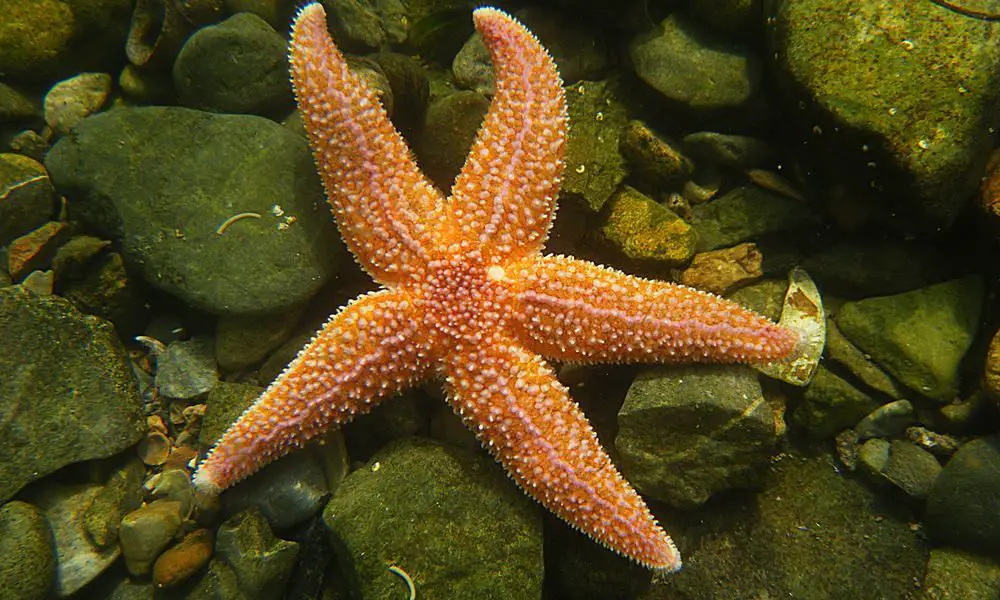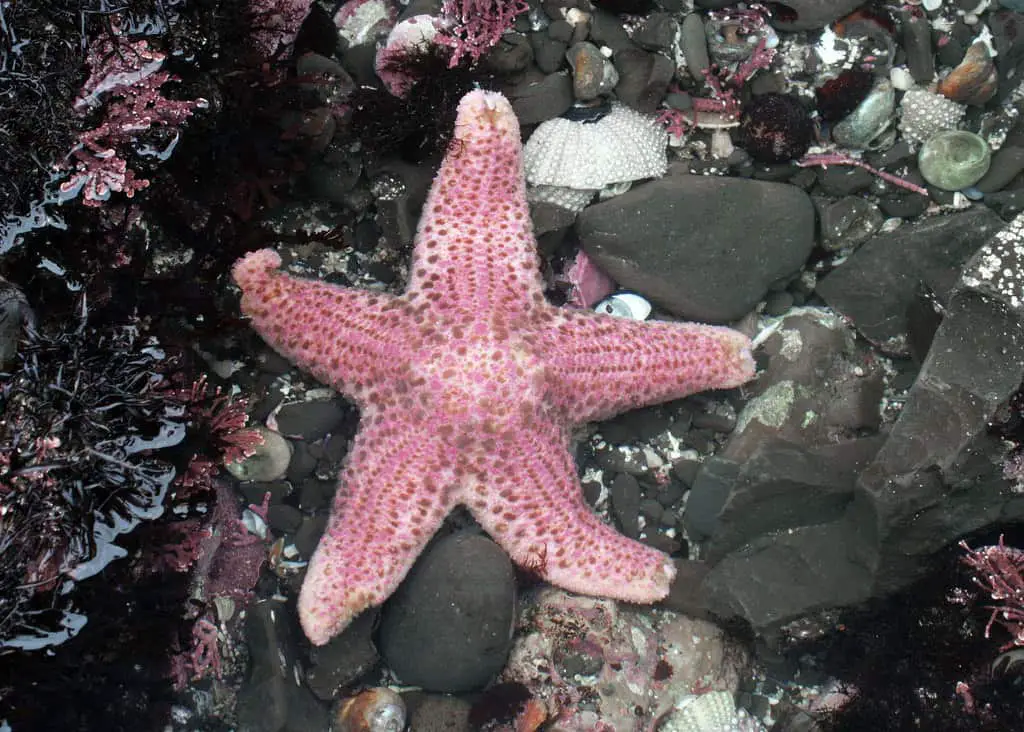Do Starfish Have Eyes

Introduction
Do Starfish Have Eyes: The mysteries of the ocean’s depths have long fascinated humanity, beckoning us to explore the enigmatic world beneath the waves. Among the myriad creatures that call the ocean home, starfish have captivated our imagination with their striking appearance and intriguing behaviors. As we delve into the question, “Do Starfish Have Eyes?” we embark on an exploration of the remarkable adaptations and sensory mechanisms that enable these mesmerizing marine animals to navigate their underwater realm.
Starfish, also known as sea stars, belong to the phylum Echinodermata and exhibit a dazzling array of shapes, sizes, and colors. Their distinctive five-armed bodies have led to their association with celestial stars, adding an air of mystique to their identity. However, it is their sensory abilities that invite us to unravel the secrets of their perception.
In this journey, we will uncover the surprising truth about whether starfish possess eyes and how these sensory organs function in the absence of a conventional visual system. We will explore the diverse species of starfish reproduce and their unique adaptations to various marine environments, from shallow coastal waters to the crushing depths of the ocean floor.
Join us as we dive into the fascinating world of starfish, where we seek to understand their perception, behavior, and the captivating ways in which they interact with their underwater surroundings. As we answer the question of whether starfish have eyes, we unveil a tapestry of sensory wonders that remind us of the endless marvels awaiting discovery beneath the azure waves.

How many eyes do starfish have?
A starfish has eyespots that cannot see much in the way of details but can detect light and dark. These eyespots are at the tip of each of the starfish’s arms. That means that a 5-armed starfish has five eyespots, and a 40-armed starfish has 40!
Starfish, also known as sea stars, typically have multiple eyes, but the number can vary depending on the species. These eyes are not like our human eyes but are simple structures called “eyespots” or “ocelli.” The exact number of eyespots on a starfish varies, with some species having one eyespot at the tip of each arm, while others may have several eyespots along each arm.
Eyespots in starfish are quite rudimentary compared to complex vertebrate eyes. They are primarily used to sense changes in light and dark in their environment, helping the starfish detect shadows, predators, or potential prey. While these eyespots are not capable of forming detailed images or recognizing specific objects, they play a crucial role in the starfish’s basic orientation and survival.
Can a starfish see you?
Do Starfish Have Eyes
Starfish have eyes
Whilst their eyes may not be able to see in fine detail like our eyes can, they are able to detect different shades of light allowing them to navigate their surroundings – allowing them to hunt for food and hide from predators.
Starfish cannot “see” in the way humans or many other animals do. Their eyespots are very basic and do not form images or recognize specific objects. Instead, these eyespots primarily detect changes in light and dark, helping starfish sense the presence of shadows or movements in their environment.
Therefore, starfish cannot see you in the sense that they would recognize your appearance or identity. However, if you were to cast a shadow or create a change in lighting near a starfish, it might be able to sense this change through its eyespots and react to it. Starfish primarily rely on other senses, such as touch, chemoreception, and their ability to detect chemical cues in the water, to navigate their surroundings and find food.
Can starfish see or hear?
Starfish have got eyes — one on the tip of every arm. Like compound eyes in insects they’re light sensitive, but don’t have any lenses. Apparently scientists have known about the eyes for a couple of hundred years. But it was only very recently discovered that they can use their eyes to find their way around.
Starfish, also known as sea stars, have limited sensory capabilities, and they do not possess the ability to see or hear in the way humans or many other animals do.
Vision: Starfish have simple eyespots, also known as ocelli, that are typically located at the tips of their arms. These eyespots are rudimentary and primarily sensitive to changes in light and dark. They can detect variations in light levels and shadows, helping starfish sense their environment, but they do not form detailed images or perceive colors. Starfish’s visual capabilities are quite basic and are not comparable to the complex vision of animals with well-developed eyes.
Hearing: Starfish do not have ears or a hearing system like mammals or some other animals. They lack the anatomical structures necessary for hearing, such as ears with eardrums and auditory receptors. Therefore, starfish cannot hear sounds in the way that humans or certain marine animals can.
Instead, starfish primarily rely on other senses, such as touch and chemoreception (the ability to detect chemicals in the water), to interact with their environment and locate prey. They use their tube feet, which are equipped with sensory cells, to detect physical contact with objects and respond to stimuli. These sensory adaptations are better suited for their underwater existence and the challenges of life in the marine environment.
Do starfish have eyes and mouth?
On the end of each arm or ray there is a microscopic eye (ocellus), which allows the sea star to see, although it only allows it to see light and dark, which is useful to see movement… The mouth of a starfish is located on the underside of the body.
Yes, starfish, also known as sea stars, have both eyes and a mouth. However, it’s important to understand that their eyes and mouth differ significantly from those of more complex animals like humans.
Eyes: Starfish possess simple eyespots or ocelli, which are sensitive to changes in light and dark. These eyespots are usually located at the tip of each of their arms. While these eyespots are not capable of forming detailed images or recognizing specific objects, they play a crucial role in the starfish’s basic orientation and survival. They can detect shadows and variations in light levels, which helps the starfish sense its surroundings and respond to changes.
Mouth: Starfish have a mouth located on the underside of their central disk. The mouth is surrounded by several small, flexible tube feet. Starfish are carnivorous and feed on a variety of prey, including mollusks, small crustaceans, and detritus. They use their tube feet and their specialized feeding structures to capture and ingest their prey. The feeding process of starfish involves extruding their stomach out of their mouth and digesting their prey externally.
So, while starfish do have both eyes and a mouth, their eyes are relatively simple and serve basic sensory functions, while their mouths are adapted for feeding on a wide range of marine organisms.
Can starfish see in the dark?
Recent research published in the journal Proceedings of the Royal Society B not only highlighted that starfish have eyes but also revealed that they can even see in the dark.
Starfish, also known as sea stars, do not have true night vision or the ability to see in complete darkness like some nocturnal animals. Starfish primarily rely on light-sensitive structures called eyespots or ocelli, which are located at the tips of their arms. These eyespots are relatively simple and are sensitive to changes in light and dark, helping starfish detect shadows and variations in light levels in their underwater environment.
However, starfish do not possess the complex visual adaptations that would enable them to see in pitch darkness. Their eyespots are best suited for detecting light during the day or in well-lit underwater conditions. In low-light or dark environments, starfish rely on their other senses, such as touch and chemoreception (the ability to detect chemicals in the water), to navigate and locate prey.
In low-light conditions or darkness, starfish primarily rely on their other senses, such as touch and chemoreception (the ability to detect chemicals in the water), to navigate and locate prey. Their eyespots are not adapted to provide detailed vision in the absence of sufficient light.
Can starfish see in Colour?
There are indications that they are involved in negative phototaxis but this may also be governed by extraocular photoreceptors. Here, we show that the eyes of the coral-reef-associated starfish Linckia laevigata are slow and colour blind.
No, starfish cannot see in color. Starfish have relatively simple eyespots or ocelli, which are sensitive to changes in light and dark but lack the ability to perceive a wide range of colors. These eyespots primarily provide basic information about the presence or absence of light in their environment.
Color vision, as experienced by humans and some other animals, involves the detection of different wavelengths of light, allowing the perception of a spectrum of colors. Starfish, with their limited visual system, do not possess the necessary structures or adaptations for color vision.
Starfish primarily use their eyespots for basic orientation and detecting movement or changes in light levels, which can be useful for detecting predators, prey, or changes in their surroundings.
Is it OK to touch a live starfish?
Are starfish friendly?
No, starfish don’t bite. They have no teeth and are not dangerous to humans. These small sea creatures are not exactly known for their voracious appetite and won’t harm you.
It is generally considered acceptable to touch a live starfish gently, but it’s essential to do so with care and respect for these marine creatures and their natural habitat. If you encounter a live starfish in a tide pool or while snorkeling or diving, you can touch it lightly to observe its texture and feel. However, there are some guidelines to follow:
Use clean hands: Ensure that your hands are free from any harmful substances, such as sunscreen or chemicals, before touching a starfish. These substances can be harmful to marine life.
Be gentle: Handle starfish gently and avoid squeezing or applying too much pressure. Their bodies are fragile, and excessive force can harm them.
Do not remove from the water: If you encounter a live starfish in the water, it is best to leave it in its natural habitat. Removing a starfish from the water can stress it and disrupt its feeding and respiration processes.
Observe local regulations: Be aware of any local regulations or guidelines regarding the handling of marine life. Some areas may have specific rules in place to protect the ecosystem.
Do starfish bite humans?
Most starfish are not poisonous, and since they can’t bite or sting us, they pose no threat to humans. However, there’s a species called the crown-of-thorns starfish which is venomous, and if their spines pierce the skin they can be venomous.
No, starfish do not bite humans. Starfish are marine invertebrates, and they lack the anatomical structures necessary for biting or chewing. They do not have jaws, teeth, or a mouth adapted for biting. Instead, starfish capture and consume their prey, which primarily consists of small marine organisms like mollusks and crustaceans, using a different feeding mechanism.
Starfish typically wrap their arms around their prey and use their specialized tube feet to grasp, manipulate, and eventually ingest their food. The feeding process often involves the starfish extending its stomach out of its mouth and digesting its prey externally. This process is quite different from biting, as seen in animals with teeth.
For humans, interacting with starfish does not pose a risk of being bitten. However, it’s crucial to handle starfish with care and respect when encountering them in their natural habitat, such as tide pools or while snorkeling or diving. Avoid disturbing or harming these marine creatures, and observe any local regulations or guidelines regarding the handling of marine life to protect the ecosystem.

Conclusion
In the depths of the ocean, where sunlight grows dim, and the pressures are crushing, starfish reign as extraordinary creatures, intriguing marine biologists and captivating the curious. As we conclude our exploration into the question, “Do Starfish Have Eyes?” we find ourselves enriched with a deeper understanding of these remarkable marine animals and their sensory world.
Starfish, though they lack conventional eyes, possess a unique and intricate system of sensory perception that allows them to navigate their aquatic habitats with precision. Specialized structures known as “eyespots” or “ocelli” enable them to sense changes in light and dark, providing rudimentary visual information. However, it’s essential to recognize that their visual capabilities are vastly different from those of humans or many other animals.
While their vision may be limited, starfish compensate with an array of other senses, including chemoreception, touch, and a highly developed sense of smell. These sensory adaptations empower them to locate prey, avoid predators, and navigate the complex, three-dimensional environment of the ocean floor.
In our journey to unravel the mysteries of starfish perception, we have uncovered not only the secrets of their sensory world but also the elegance of nature’s adaptations to diverse ecosystems. The sea, as it turns out, teems with life forms that perceive the world in ways we are only beginning to fathom.
As we bid adieu to our exploration of starfish, let us carry forward the appreciation for the wonders of the natural world, where even the simplest creatures like the starfish have reveal the intricacies of life’s adaptations. The ocean’s depths remain a realm of fascination and endless discovery, inviting us to continue our exploration of its hidden treasures.



